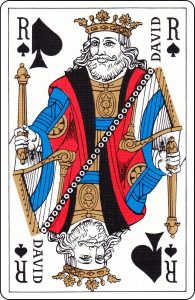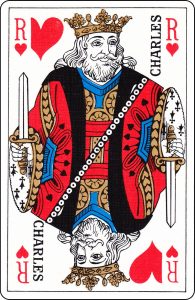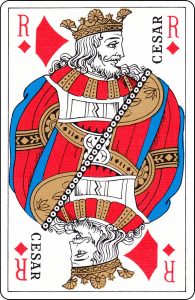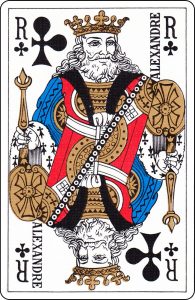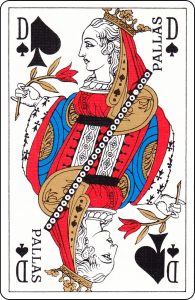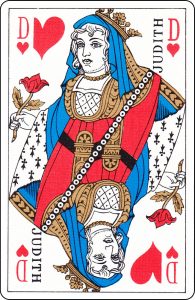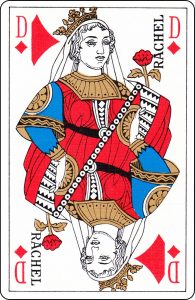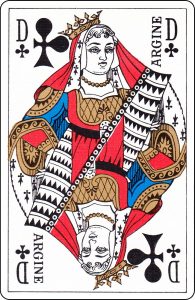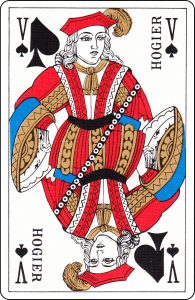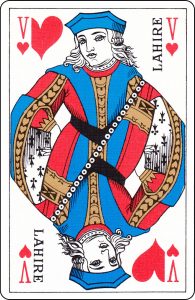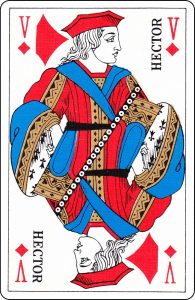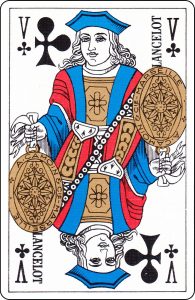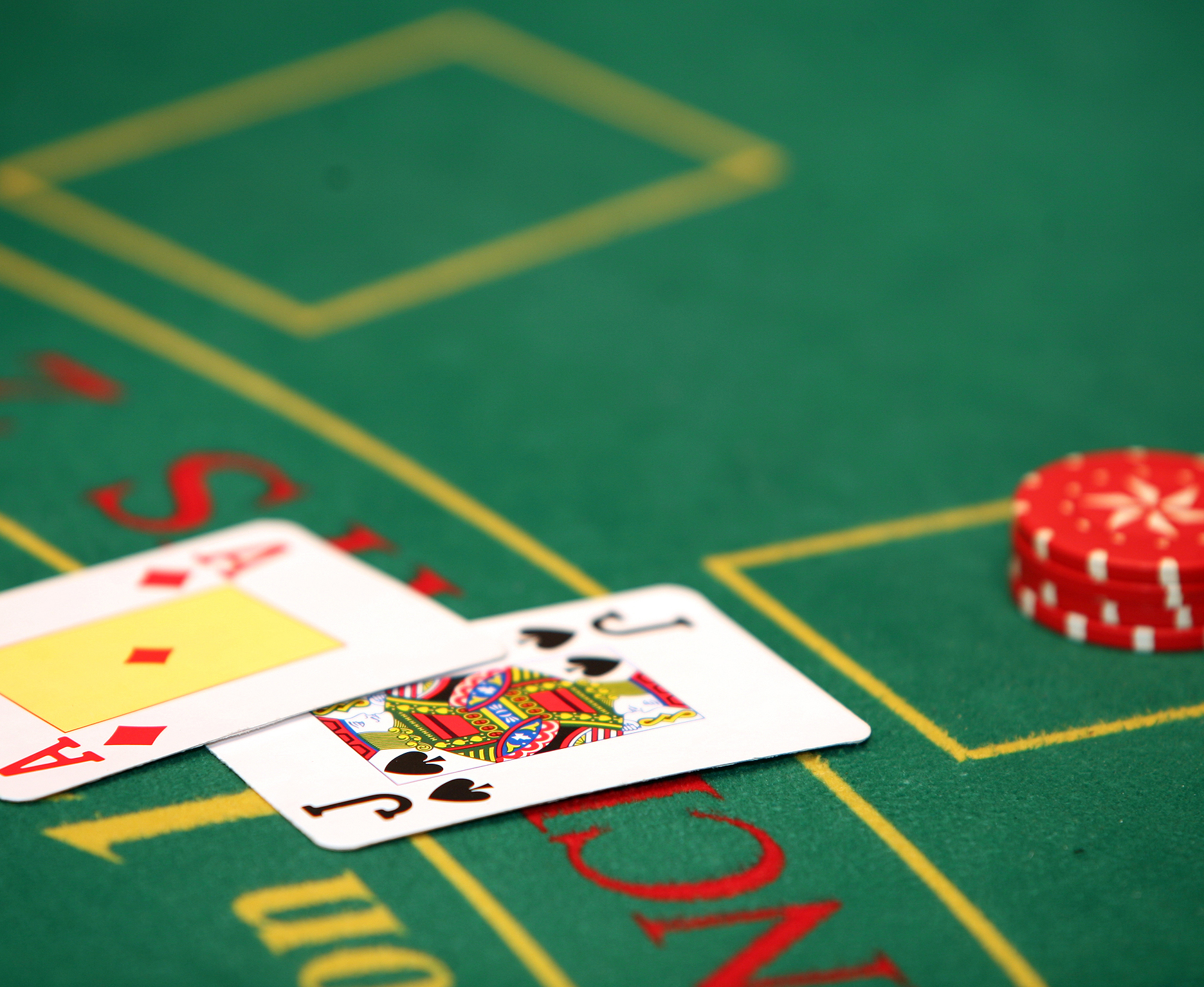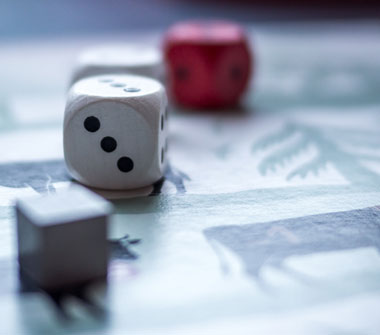Do you like card games? Chances are the last time you held a King, Queen or Jack in your hand, you didn’t realize whose faces were staring back at you. They’re no random royalty, in fact face cards—also known as court cards—are inspired by mythical and historic figures you may already know.
While the origins of playing cards are debated—some say China, others say the Middle East—what we know for sure is that they traveled to Europe from Egypt in the 15th century, with Europeans quickly changing the design to represent their own royalty and famous figures.
Given that playing cards were introduced to Europe during the male-centric, early 1400s, face cards initially featured only Kings, Knights and ‘Knaves’ (now known as Jacks). It took until the 1440s for Queens to make their introduction, first in Germany, and holding a coveted place among the cards ever since.
Then, in 16th century France, face cards were transformed into what we see today. That same makeover included some important ‘casting’ decisions. No, we’re not talking Clooney, Pitt – or even Queen Elizabeth for that matter.
So, who are the royals and famous figures creating the chance in your game?
Kings
King of Spades: David
David was the Great King of Israel from 10th and 11th century BCE. This was the same brave, David who slayed the giant Goliath with the skillful throw of a single stone.
King of Hearts: Charlemagne or Charles the 1st
Charles the 1st was the King of the Franks from 768 CE and, King of Italy and Holy Roman Emperor from 774 CE. He was known as the “Father of Europe”, as his empire united most of Western Europe for the first time since the Roman Empire—no wonder he was also called “Charles the Great”.
King of Diamonds: Julius Caesar
Julius Caesar was the General, Consul and dictator of the Roman Republic in the 1st century BCE. He was known for extending the Roman Empire into Western Europe, but did you know his namesake gave us the month of July?
King of Clubs: Alexander the Great
Alexander was the Great King of Macedonia throughout 4th century BCE. By the age of 30, he had created one of the largest empires of the ancient world, stretching from the Ionian Sea to the Himalayas. King Alex was undefeated in battle and to this day, he is still considered one of history’s most successful commanders and legendary figures.
Queens
Queen of Spades: Pallas Athena
In Greek religion and mythology, Athena was the goddess of wisdom, courage, inspiration, civilization, law and justice, just warfare, mathematics, strength, strategy, arts and skill. A mouthful, right? Although she never existed as a real person, she has been the inspiration behind countless monuments, battles, songs, works of literature, and of course the city of Athens which was built in her honor.
Queen of Hearts: Judith
Judith is the fictional heroine of The Book of Judith, from the Old Testament of the Eastern Orthodox Bible. Her story is one of a daring and beautiful Jewish widow, who frees the Israeli people from Assyrian oppression by slaying the General Holofernes.
Queen of Diamonds: Rachel
Another biblical figure, Rachel, was the mother of both Benjamin and the famous Joseph, who led Israel’s tribes in exile from Egypt.
Queen of Clubs: Argine or Argea
Some argue her name is an anagram for “regina”, latin for “Queen”. Others believe the Queen of Clubs represents lady Argea, the mythological mother of Argus, who built the ship Argo from the Ancient Greek story of Jason and the Argonauts.
Jacks
Jack of Spades: Ogier the Dane
Ogier was the son of the King of Denmark in 8th century CE. He fought at Charlemagne’s side against the Saracens, where he famously slayed the giant Brehus.
Jack of Hearts: La Hire
Étienne de Vignolles, called La Hire, was a French military commander during the Hundred Years’ War, and a close consort of Joan of Arc. La Hire was one of few military leaders who believed in Joan, fighting along her at the battle of Orleans.
Jack of Diamonds: Hector
In Greek mythology, Hector was a Trojan prince (the first son of King Priam) and the greatest fighter for Troy in the Trojan War. He acted as leader of the Trojans and their allies in the defense of Troy, killing 31,000 Greek fighters in all.
Jack of Clubs: Judas Maccabeus or Lancelot
There are two debated attributions for this card:
Judas Maccabeus
Judas Maccabeus was a Jewish priest who led the Maccabean revolt against the Seleucid Empire from 167–160 BCE. He is acclaimed as one of the greatest warriors in Jewish history alongside Joshua, Gideon and David.
Sir Lancelot
Sir Lancelot of ‘Knights of the Roundtable’ fame, was the most trusted of King Arthur’s knights and a key player in many of Arthur’s victories. Lancelot is best known for his love affair with Arthur’s wife, Guinevere, and his search for the Holy Grail.
Why these figures? They’re the ones most commonly attributed since France’s 16th Century takeover of the playing card. The names behind face cards may differ between eras and regions, sometimes featuring Joan of Arc or the goddess of love and beauty, Venus.
Knowing the heroic figures and royals sure does bring a deck of cards to life, doesn’t it? The next time you find yourself playing a game like Blackjack, and you’re able to beat the dealer thanks to Alexander the Great or King Charlemagne, give some thanks to early French card makers who made it possible!
Had enough history? Learn how to play today’s card games here.
Card images © CAMOIN & CIE, Marseille. Original Inspiration (from 16th century Paris Decks).




